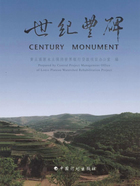
FOREWORD
Decades of unsustainable agricultural and natural resource management practices have led to widespread environmental degradation,poverty and downstream flooding in the Loess Plateau area,one of China's most impoverished regions.
Considered an almost impossible task,the Chinese Government,in close collaboration with the World Bank,set out in 1991 to fundamentally change the future of the Loess Plateau and its 70 million inhabitants.Thanks to the extraordinary efforts over the past decade by three million farmers,local cadres and senior government officials,an outstanding largescale watershed rehabilitation project was implemented in four provinces covering an area of more than 20,000 km2 and changing the lives of the local people forever.
Through a truly integrated approach,farmers received benefits through terracing and other income generating investments first.In turn,they were willing to change unsustainable grazing and cultivation practices and revegetate large areas of formerly degraded slopelands.Local participation during planning and implementation ensured strong ownership and sustainability.
Today,the once barren Loess Plateau presents itself with a different face and has again become a green land,providing a livelihood for its inhabitants,retaining precious soil and moisture,and protecting downstream areas from devastating flooding.
This Pictorial provides a vivid record of the historical changes witnessed on the Loess Plateau,and documents the exemplary good collaboration between the World Bank and the Chinese people to achieve a common objective:sustainable development.
